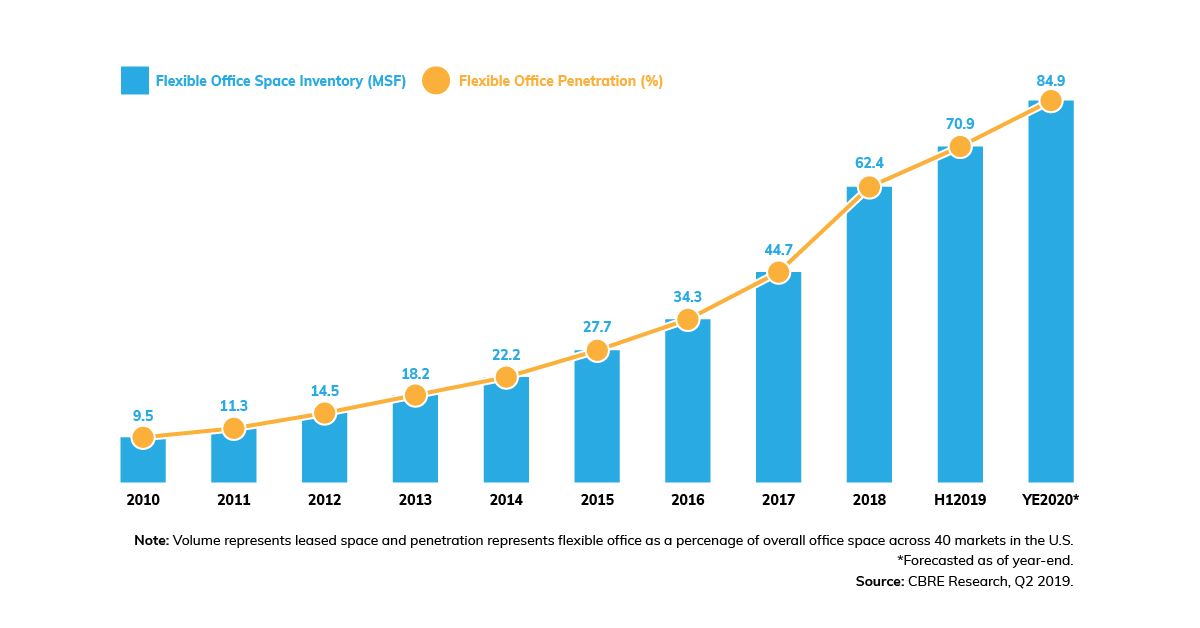The remote workforce has gone global. Seventy percent of workers telecommute at least once per week, while 53 percent of employees work in the office at most half the week, according to a recent study from IWG. Even more fascinating, a Citrix study estimates that 50 percent of the workforce will be completely remote by the end of 2020. Such numbers shape the remote work trends for the next period.

Change and adapt, 2020’s mantra
As remote working becomes the norm, the workforce has to change and adapt. The needs of remote workers are different than those of office workers, and so are their challenges. Whether you’re a remote worker yourself, or consider taking your team global, here are some of the most prominent remote work trends for 2020.
The need for cybersecurity is increasing
Remote working is made possible by cloud based systems. However, the digital era has also brought rise to hacking and fraud. More than 50 percent of small businesses were hacked in the U.S. in 2019, and this number is only increasing.
Remote employees are especially prone to cybersecurity issues, as the majority of their work is conducted online. Plus, they can’t turn to their desk partner to say: “Do you think this email seems weird?” And then avoid a potential hack.
In fact, CNBC reports that “A majority of executives agree that the risk of a data breach is higher when an employee works remotely, yet few businesses have comprehensive off-site policies in place for those workers. Over half of small business owners said they have no policy for remote workers.”
This means cybersecurity will continue to be a risk for the business world, even more so for companies with a remote workforce, suggests Info Security Magazine.
More companies will rely on the remote workforce
Executives and recruiting professionals are worried about the health of their industries and the demand for skilled workers, according to the 2020 Future of Work Report.
As a way to manage this potential risk, 53 percent of respondents will be looking to the remote workforce to fill the gaps that they anticipate experiencing in 2020 and beyond. Also, 51 percent will be looking to hire assignment-based freelance support and 50 percent will outsource or look for contract workers.
Some employees may be moving to the suburbs
Traditionally, full-time workers have lived in urban areas because that’s where the work is. But where would you live if you could live anywhere? This is the question that many employees allowed to work remotely will be asking themselves in the new year. When you don’t need to live where you work, the opportunities are endless.
As a result, small towns are now deploying initiatives to bring these remote workers in. Organizations like the Center on Rural Innovation are also being developed to make this possible. They help small towns build strategies to enable the local economy to grow with digital jobs, technical skill-building, entrepreneurship, and also create smart amenities to attract and keep working-age adults.
Other states and towns are offering financial compensation for remote workers who move to their area. For example, Vermont will pay remote workers $5,000 each year for two years.
The flexible office industry continues to grow
What you know as a coworking space is called flexible office space in the real estate world. As remote employees need space to work outside of a traditional office, so does the need for this type of work space. The 2019 CBRE report confirms this trend for the past decade.

What’s more, the inventory for this type of office space has grown incrementally, year over year, and is predicted to continue at this rate. So much so, that the CBRE report found flex space could account for 13 percent of U.S. office supply by 2030.
Much of that expansion will be in some of the fastest growing markets, which include Tampa, Orlando, Phoenix, Oakland and Salt Lake City.
Company communication needs some love too
Now more than ever before, we see an increased need for a streamlined communication both inside and outside the company. If evading usual communication glitches between people who work in the same place was tough, good luck from now on with the growing percentage of remote workforce. And the same holds true for employee engagement.
According to Buffer’s State of Remote Work report, a whopping 20 percent of remote workers feel lonely. Keeping them talking with their teammates and engaged in company life not only helps reduce their loneliness, but also increases their productivity.
Moreover, the future of any business depends on its customers and the experience it curates for them. There is a deep link between internal, team communication and customers. Ultimately, communication as a whole is a critical element to the success of any company.
Therefore, the communication system becomes a definitory element in a company’s life. It’s one of those make-it-or-break-it choices that have great influence over the most unexpected aspects of the business.
At 4PSA, we’ve been helping businesses with their communication needs for many years. Take Hubgets for a ride and find out how it can empower your company’s communication and team collaboration, regardless of your employees’ location and working habits.
Remote work trends in a nutshell
The remote workforce is only growing. And so is every other area of the industry, as companies evolve and shift to meet the demands of our modern work world.
As we look ahead, we see that remote work will continue to become part of the ecosystem worldwide, a trend we’re very excited about.
How is 2020 going for your company so far?
Post A Reply